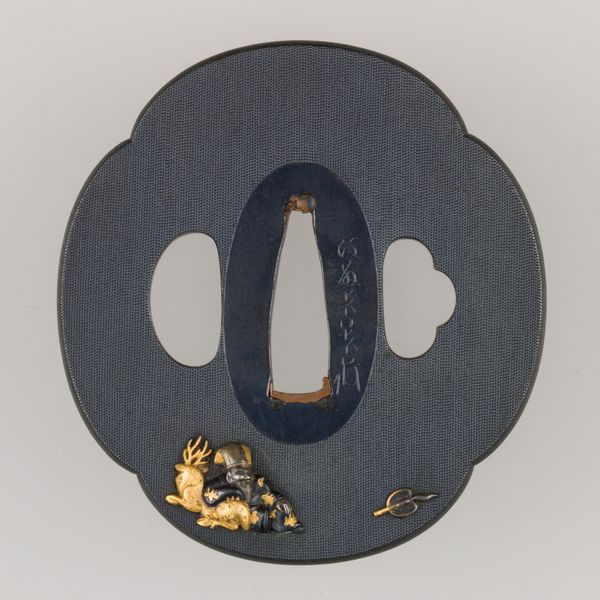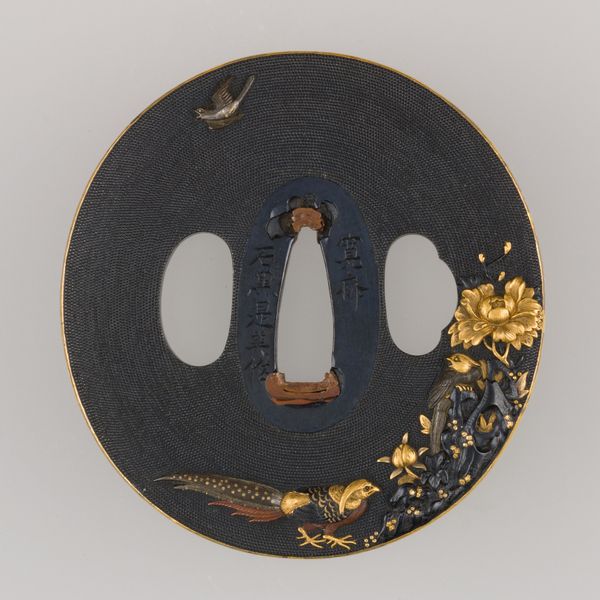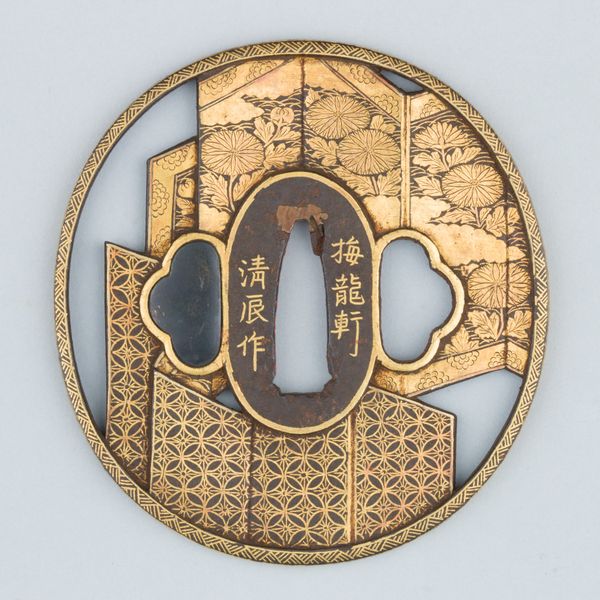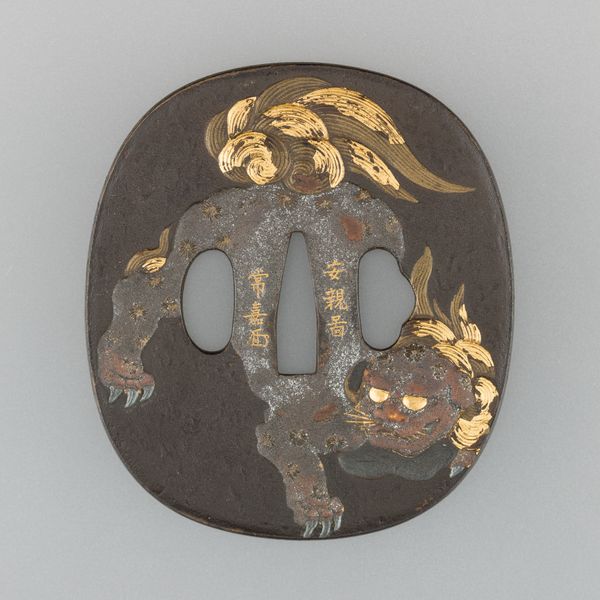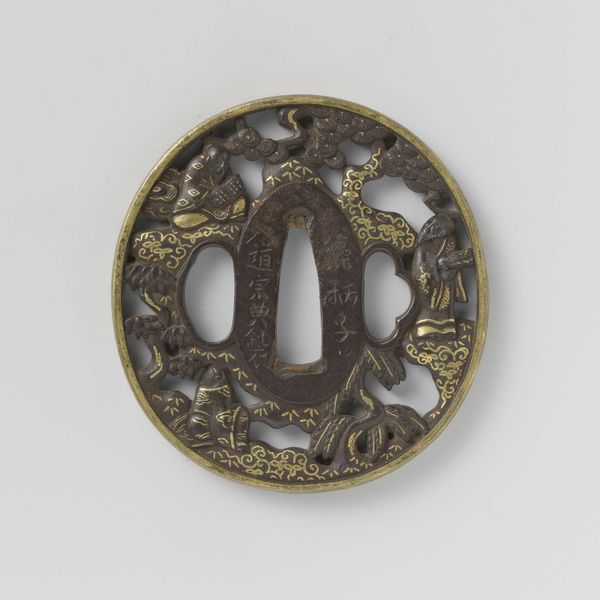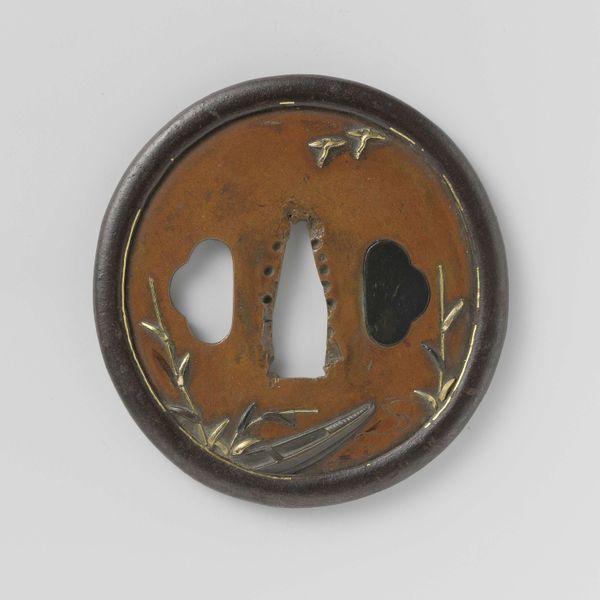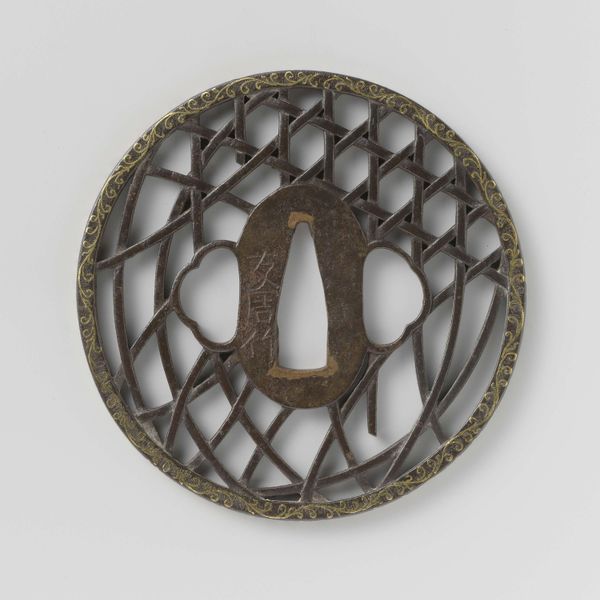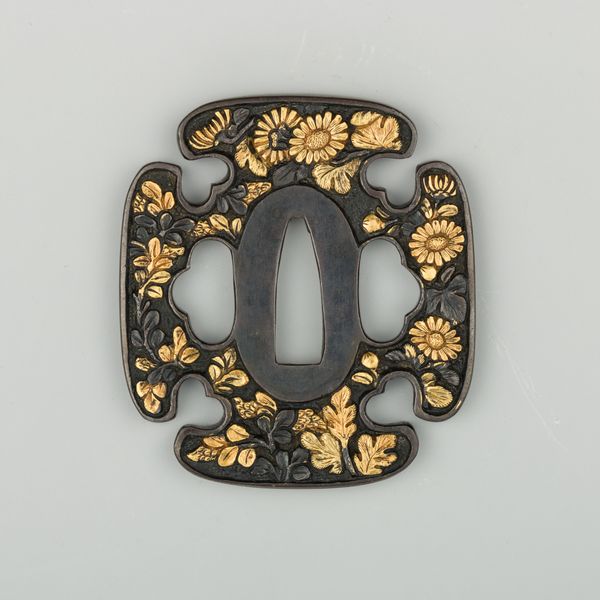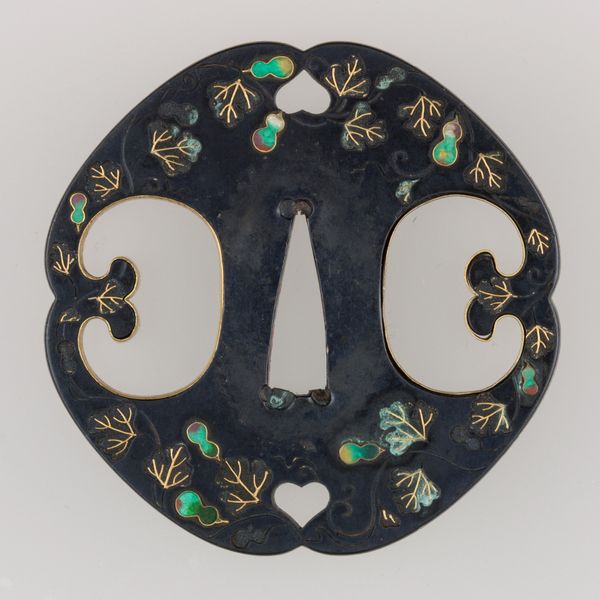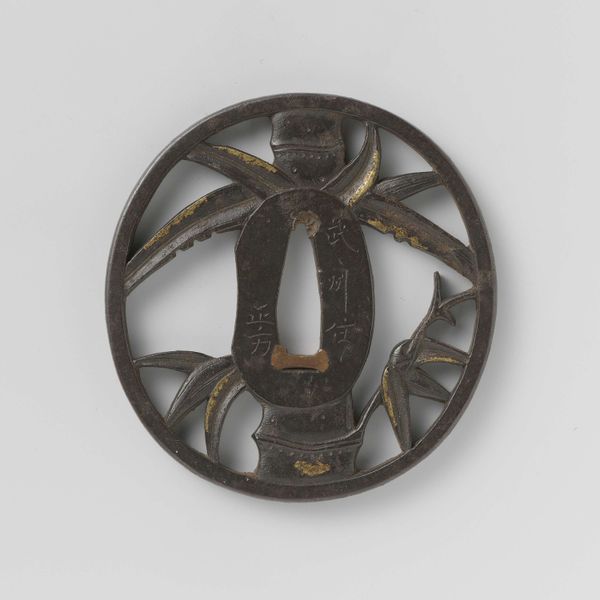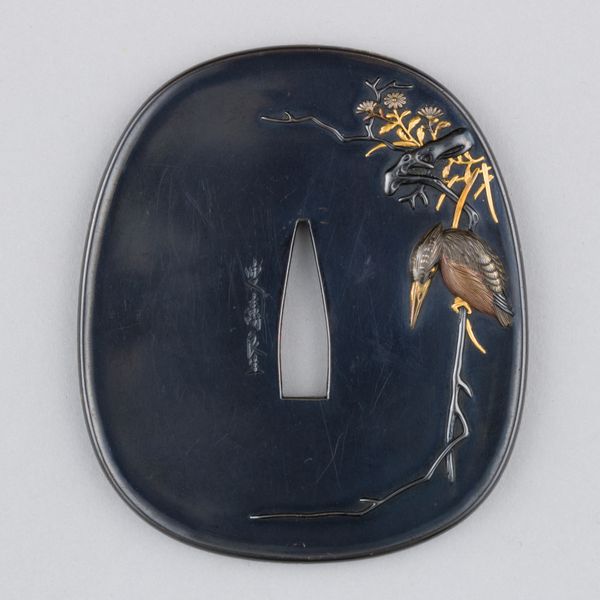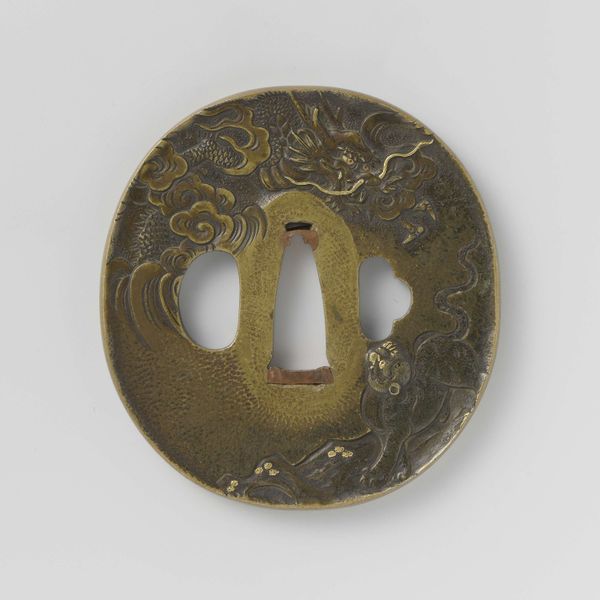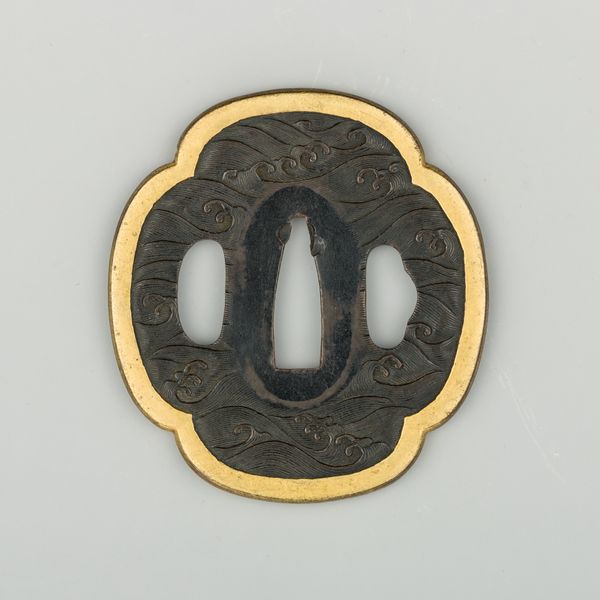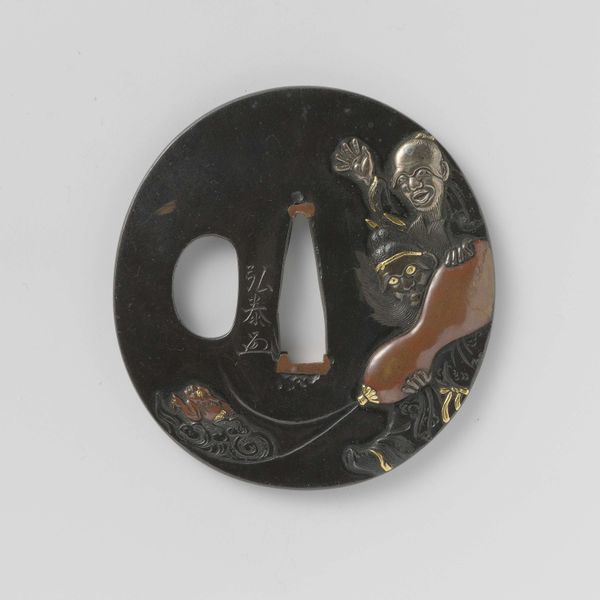
metal, guilding, engraving
#
metal
#
asian-art
#
round design
#
guilding
#
japan
#
ceramic
#
line
#
armor
#
engraving
#
sword
Dimensions: 2006.262.1: H. 2 15/16 in. (7.4 cm); W. 2 3/4 in. (7.0 cm); 2006.262.2: H. 2 13/16 in. (7.1 cm); W. 2 9/16 in. (6.5 cm)
Copyright: Public Domain
These sword guards, or tsuba, were made in Japan by Sunagawa Mao-Yoshi, who died in 1875. They are wrought from iron and gold, and exemplify the high level of craftsmanship that was lavished on Samurai swords. These tsuba are more than functional; they are miniature sculptures. Notice how the irises are rendered in exquisite detail with contrasting gold, against the dark swirling iron. The metal would have been heated and hammered, folded and filed. The gold inlays precisely placed. The creation of such an object demanded not only technical skill, but also a deep understanding of the natural world and a refined aesthetic sensibility. Each element had to be perfectly balanced, the negative space as carefully considered as the solid form. Looking at these tsuba, we are invited to reflect on the values of the society that produced them, one that placed a high premium on both martial prowess and artistic accomplishment. These traditions live on today, as craft continues to challenge our understanding of art.
Comments
No comments
Be the first to comment and join the conversation on the ultimate creative platform.
